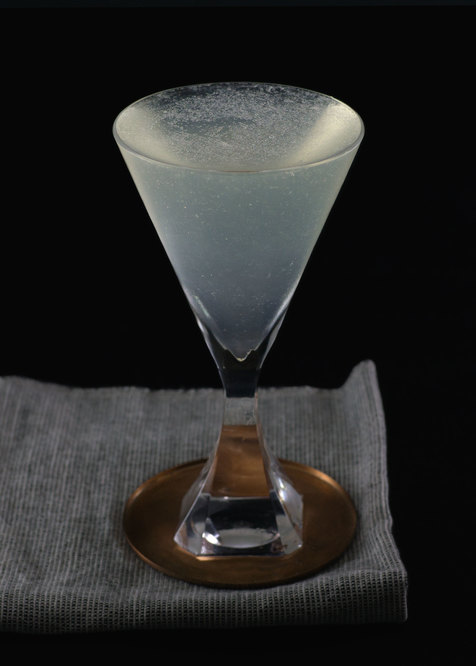
In the following decades, the cocktail wasn't very popular, having been published rarely. The cocktail gained further popularity when the recipe was mentioned in the Handbook for Hosts in Esquire magazine in 1949. As far as the Airmail Cocktail is concerned, Whitfield commented on it ‘It ought to make you fly high’. Whitfield had collected numerous drinks from the years of prohibition and provided them with comments partly in laconic style. In his recipe collections, Just Cocktails (1939) and Here's How (1941), the author W.C. In 1941, the recipe was published in a mixology book. Shortly after, the Airmail Cocktail appeared for the first time in an advertising brochure of the then still Cuba-based rum manufacturer Bacardí. Since 1925, flights were available from Key West to Havana, and in 1930, a regular airmail service was established to and from the island. Cuba, among other countries, benefited from this as a pronounced bar and cocktail culture began developing on the island in the 1920s.

Because of prohibition, Americans were only able to legally drink alcohol abroad until 1933. In those years when international telephone connections were still a rarity, airmail was the fastest means of communication across national borders. in the 1920s or 1930s.Īirmail Cocktail is also a brand of ready-to-drink cocktails created and produced in Cognac (France) since 2020.Īs with the slightly older Aviation cocktail, to whose recipe there is no similarity, the name is reminiscent of aviation which developed rapidly at that time. It was probably created during or shortly after the period of prohibition in the United States of America or on Cuba, i.e. The Airmail or Air Mail (also Airmail cocktail) is a classic cocktail based on rum, lime or lemon juice, honey, and sparkling wine. However you approach the rum selection, the result, he says, is a drink that remains refreshing, with additional layers of complexity.Airmail Cocktail, garnished with a postal stamp A rich-flavored Cuban-style white rum or gentle- character aged rum appeals to most palates, and Dacey even likes experimenting with a split base- divided between a full-flavored white rum blend from Jamaica and Trinidad, and a grassy, golden rum-for his own Airmails. “Essentially, the drink is a supercharged Daiquiri: Honey adds complexity to the sweet portion of the drink, and Champagne provides elegance and effervescence in equal measure.” There’s also plenty of play to be found in the classic’s rum selection. “Everyone loves a Champagne cocktail, and everyone should love rum, so why wouldn’t you offer a combination of the two?”ĭacey calls the Airmail a remarkably simple reflection of the midcentury’s trend of tropical drinks.


“The Airmail has come close to being forgotten to history, which is a shame, since on paper it’s such a no-brainer,” says Simon Dacey, general manager of London rum bar Trailer Happiness. Postal Service in 1977 (succeeded by First Class postage), the drinkable sort has stuck around-but just barely. While the domestic airmail category was officially retired by the U.S. Airmail was the au courant way to send a letter back when a cocktail was named for it several decades into the 1900s.


 0 kommentar(er)
0 kommentar(er)
